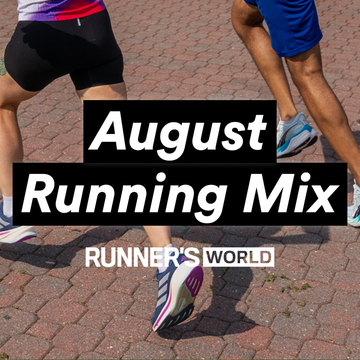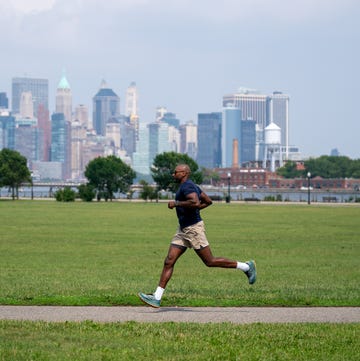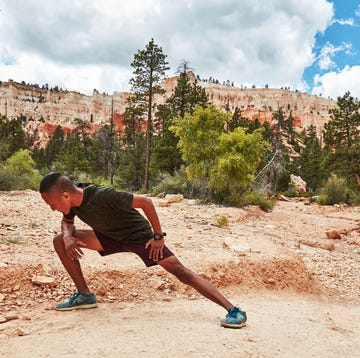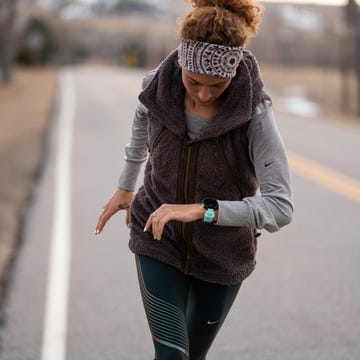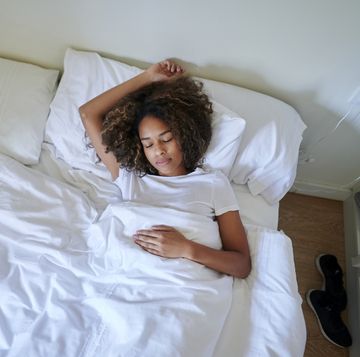Whether your training plan calls for a track workout, a long run, or anything in between, you notice your face never fails to turn beet-red. In fact, it’s typically brighter than all your running buddies. Why is that? you constantly wonder. Is there something wrong with me?
The good news: Facial redness during a run—or any other workout—is totally normal. But we can’t blame you for wondering why it happens and how to treat and prevent it. We spoke with two dermatologists to find out everything you need to know.
Why does your face turn red during a run?
When you exercise, your core body temperature rises, explains Joshua Zeichner, M.D., associate professor of dermatology and the director of cosmetic and clinical research in dermatology at Mount Sinai Hospital in New York. “As a response, blood vessels in your face dilate to bring more blood to your skin to release heat and keep your body cool,” he says.
While this happens to everyone, some people may look redder than others, according to Shari Lipner, M.D., Ph.D., dermatologist at Weill Cornell Medicine and New York-Presbyterian. This may be due to factors like genetics, skin color (if you have lighter skin, for instance), an abundance of superficial blood vessels, and skin conditions such as rosacea, she says.
The length and intensity of your runs may play a role in how red your face gets, too, Zeichner explains. “The more intense the exercise, the greater your body will respond to keep your core temperature cool,” Zeichner says. “The longer the exercise, the longer your body will have to work.”
Both Zeichner and Lipner agree it’s completely normal for your face to turn red during a run. “But if it’s getting in the way of daily activities or you find it bothersome, you should touch base with your dermatologist,” Zeichner says. (More on that below!)
How long does your face stay red?
The length of time a runner’s face typically stays red after a workout can vary from minutes to over an hour, according to Lipner. It depends on factors like the temperature you’re running in, the intensity of your workout, and how hydrated you are, she explains.
“It all depends on how long it takes your body to cool down and your genetically programmed ability for your blood vessels to reset,” Zeichner adds. “People with more severe rosacea may experience long-lasting redness, discomfort, or even facial swelling.”
How can you treat facial redness post-run?
To help bring down your core body temperature and reduce facial redness after your run, it’s helpful to apply cool compresses and gentle moisturizers to your face, hydrate with cold water, and move into an air conditioned room, according to both doctors.
Can you prevent your face from turning red in the first place?
While you may not be able to prevent facial redness completely while working out, staying hydrated, limiting runs in intense heat, and sun protection may be helpful, Lipner says. If you do have to run at peak temps, consider wearing a neck fan or a cool towel around your neck, Zeichner suggests.
Additionally, prescription topical medications like Rhofade help constrict blood vessels and prevent exaggerated facial flushing, according to Zeichner. “It’s approved for persistent facial erythema of rosacea,” he says. “The medicine works by blocking the receptors that tell the blood vessels to dilate.”
According to Rhofade’s website, tell your doctor if you have heart, blood vessel, blood pressure, or circulation issues, as the medication may make these conditions worse and affect your ability to exercise safely.
Lasers like VBeam break apart the extra blood vessels that contribute to flushing, too, and can be a useful option.
What’s the bottom line?
If your face gets red during a run, you’re not alone—and you don’t have to worry. It’s simply a normal response from your body to cool you down after a workout. You can reduce the redness by using a cold compress on your face, drinking cold water, or moving into a cooler area. However, if your facial redness bothers you, you can chat with a dermatologist about treatment options like topical creams or laser treatments.
Danielle Zickl is a freelance writer who has 10 years of experience covering fitness, health, and nutrition. She's a graduate of Ithaca College. You can find her work here on Women's Health, and in many other publications including PS, SELF, Well+Good, Runner’s World, Outside RUN, Peloton, Men’s Fitness, and more.




